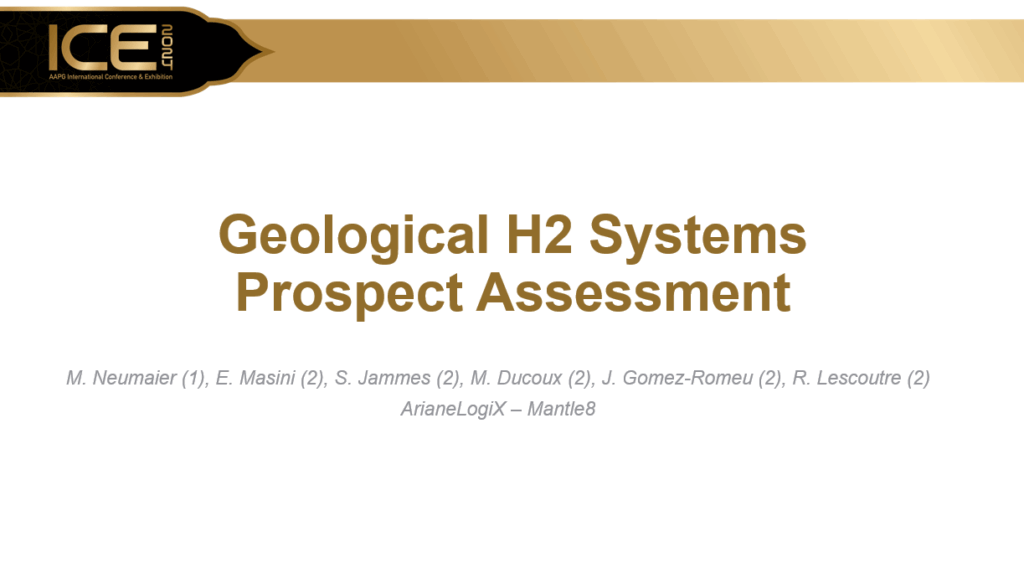AAPG ICE Conference, Muscat, 2024
Martin Neumaier – ArianeLogiX
Emmanuel Masini – Mantle8
Suzon Jammes – Mantle8
Mathieu Ducoux – Mantle8
Julia Gomez-Romeu – Mantle8
Rodolphe Lescoutre – Mantle8
Abstract
Natural, or white hydrogen (H2), has been identified as a potential source of clean energy, and as a partial replacement of fossil fuels. H2 surface seeps discovered, e.g. in the French Pyrenees, are a proof of working geological H2 systems, and exploration plays are developed to link possible H2 generative kitchens and prospects to those surface seeps (see companion presentation by Masini et al. 2024). When screening for natural H2 prospects, geological risk and success volumes must be evaluated, as done in the exploration for oil and gas. In this presentation we discuss some of the similarities and differences between natural H2 and oil and gas prospects. We also present the risk and volume assessment of the Sohano Prospect in the Western Pyrenees (France) as a case where standard prospect evaluation workflows can be applied to H2 assessments, with a few modifications and additions compared to well-established oil and gas workflows.
The Western Pyrenees (France), where the first H2 exploration permit has been delivered in 2023, are a present-day focus for Natural hydrogen exploration in Western Europe. Present-day hydrogen generation and migration from a generative kitchen corresponding to a shallow fresh mantle body imaged beneath the Pyrenean foothills are both supported by geophysics (Sylvander et al., 2023) and surface gas measurements (Lefeuvre et al., 2022). Exploration targets consist of four-way closures comprising fractured carbonate reservoirs recognized in wells and 2D seismic data through decades of oil and gas exploration.
The Sohano prospect is located in the Mauléon Basin halfway between the serpentinizing mantle source rock and the surface seeps observed along the Pyrenean thrust faults. The trap forms a four-way closure encompassing Albian, Jurassic and possibly deeper clastic Triassic reservoirs. The exploration risk is composed of two main elements: the H2 kitchen, which is new and exclusive to the H2 system, and the prospect itself, where typical hydrocarbon concepts are used. The highest chance of failure is not attributed to the generation and migration of H2, but rather their sealing and preservation.
The calculation of pore volume for the Sohano H2 prospect is done in a very similar way to oil and gas prospects. It is however very important to consider the fluid composition. H2 rarely occurs alone and is mostly associated with other gases, whether they are additional resources (such as Helium) or liabilities (such as Methane, H2S or CO2). Dependent on the pressure and temperature conditions, different assumptions in mass concentrations, which are already very speculative, result in very different volumetric concentrations. Those proportions also vary from in-situ conditions and surface conditions. The uncertainties associated with the estimation of H2 fraction within an undrilled prospect require a probabilistic approach, which involves not only uncertainty of trap shape and pore volume but also pressure, temperature, and fluid composition. Generally, explorers need to incorporate such concepts from early on, which is in high contrast to oil and gas prospect assessment, where the nature of the fluid is mostly idealized.
Because of largely commercial H2 masses and probably acceptable other gas volumes, the Sohano prospect, including its three potential reservoirs, is a good candidate for a play opener in the Pyrenees while many other similar structures with identified comparable H2 plays are waiting to be explored.
